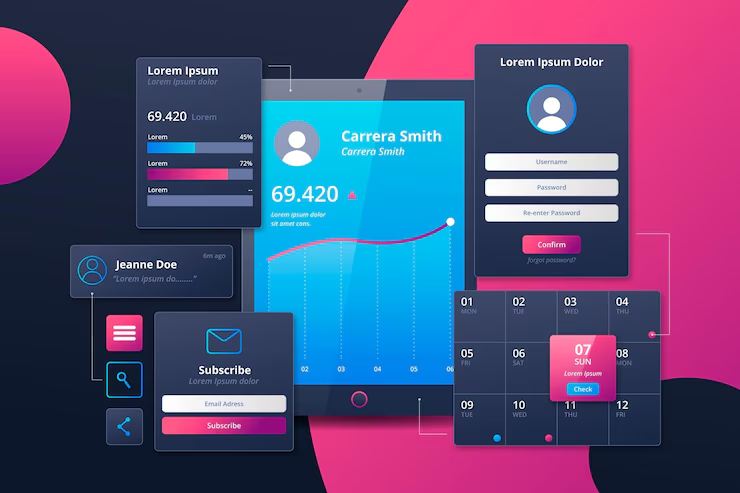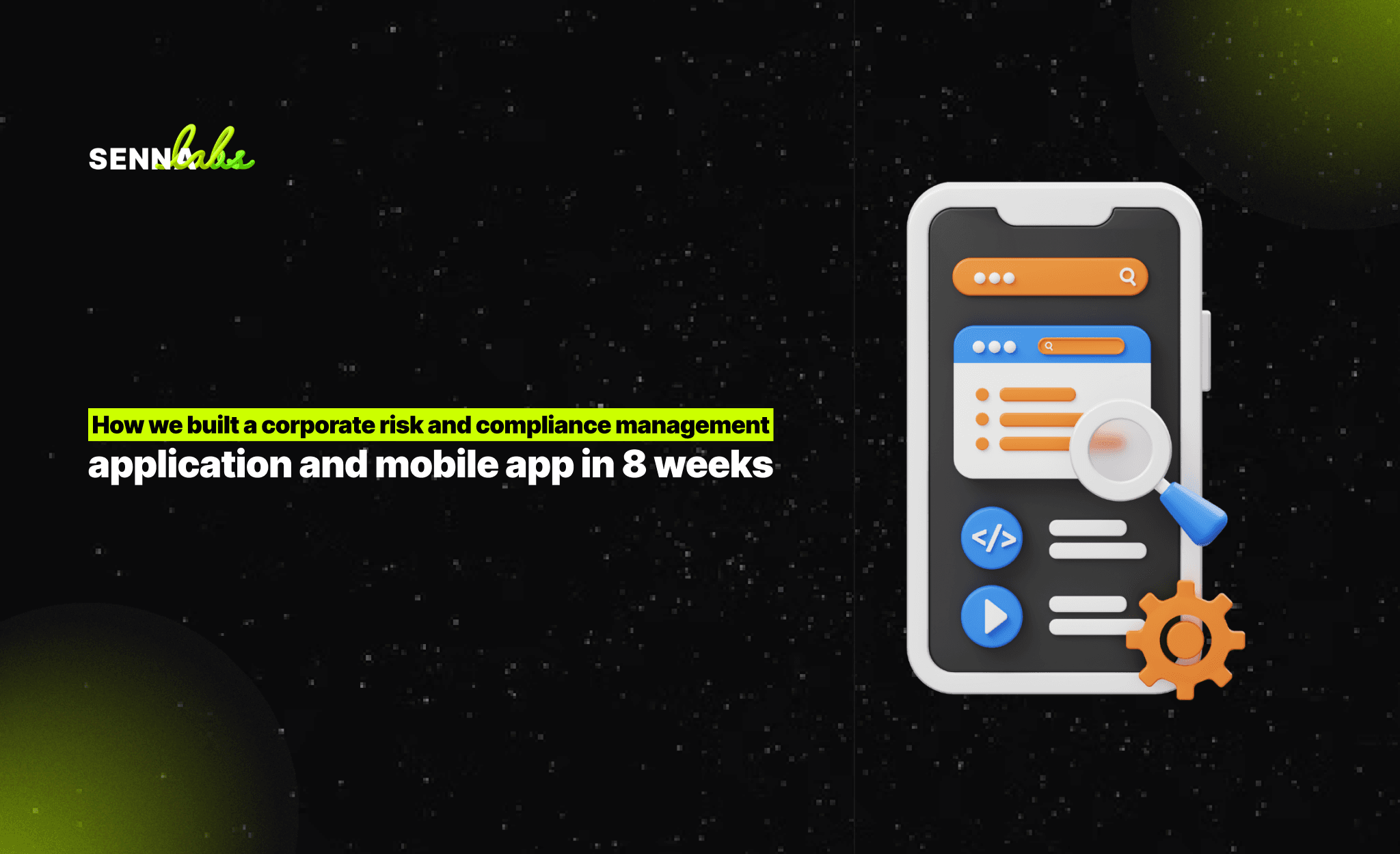How UX/UI Design Drives Conversions and Boosts Sales
Share

For any e-commerce business, the ultimate goal is to turn website visitors into paying customers. However, achieving this goal can often be challenging, as numerous factors influence whether a user will complete a purchase or leave the site. One of the most significant factors influencing a customer’s decision to buy is the user experience (UX) and user interface (UI) design of the website. These two elements play a pivotal role in whether a customer stays, browses, and eventually makes a purchase or decides to leave.
In this article, we’ll explore how effective UX/UI design can directly influence conversion rates and help boost sales for your e-commerce store. We’ll also cover the importance of intuitive navigation, optimizing checkout processes, and creating a seamless experience that builds trust with customers. With the right approach to design, you can significantly improve your website’s performance and grow your sales.

Understanding UX/UI Design in E-Commerce
Before diving into the specific ways UX/UI design impacts conversion rates, let's first define what UX and UI mean and how they contribute to the e-commerce experience:
UX (User Experience)
UX refers to the overall experience a customer has when interacting with your website. It includes everything from how easy it is for them to navigate your website to how smoothly they can complete a purchase. A positive user experience is essential for ensuring that customers don’t get frustrated and abandon their carts.
UI (User Interface)
UI design focuses on the specific elements a user interacts with, such as buttons, menus, icons, and forms. It’s about making those elements aesthetically pleasing, functional, and easy to understand. An attractive and intuitive UI enhances the overall user experience, making the process of browsing and purchasing more enjoyable.
Together, UX/UI design provides a seamless, engaging, and efficient shopping experience that makes customers feel comfortable and confident in their purchases.
How UX/UI Design Impacts Conversions and Sales
1. Creating a Smooth and Intuitive Navigation Experience
One of the first things a user encounters when they visit your e-commerce site is the navigation. A well-designed navigation system makes it easy for customers to find what they’re looking for, whether it’s a product, a category, or information about shipping and returns.
How good navigation impacts conversions:
-
Easy Product Discovery: A clean and intuitive navigation system allows customers to find products quickly, which encourages them to spend more time on your site and increases the chances they will make a purchase.
-
Reduced Frustration: Clear navigation minimizes frustration. If customers can't easily find what they're looking for, they’ll likely leave the site and go to a competitor’s website.
-
Improved User Flow: A good navigation system ensures customers can move from one section of the site to another without confusion, keeping them engaged and on track to complete a purchase.
Best practices:
-
Use a simple, clear menu structure with well-defined categories.
-
Implement breadcrumbs to help users understand where they are on the site and easily navigate back.
-
Ensure that your search bar is prominent and easy to use for finding specific products.
2. Streamlining the Checkout Process
The checkout process is where many e-commerce websites lose customers. If the checkout process is too complicated, time-consuming, or unclear, potential customers will abandon their carts, resulting in lost sales. The key to improving conversions is designing a streamlined, straightforward checkout process that minimizes friction.
How a seamless checkout process boosts sales:
-
Reduces Cart Abandonment: A lengthy, complicated checkout process is one of the leading causes of cart abandonment. A simple and intuitive checkout process with minimal steps will keep customers moving toward the final purchase.
- Increases Conversion Rates: When customers don’t encounter roadblocks or unnecessary steps in the checkout process, they are more likely to follow through and complete their purchase
-
Improves Trust and Credibility: A secure, clear, and user-friendly checkout process builds trust and reassures customers that their personal and payment details are safe.
Best practices:
-
Use a one-page checkout to minimize the number of steps and allow customers to complete their purchase quickly.
-
Offer guest checkout to avoid forcing customers to create an account, which can be a barrier to completing a purchase.
-
Display trust badges (e.g., SSL, secure payment options) and shipping details clearly to increase customer confidence.
-
Auto-fill customer information (when possible) to speed up the process and reduce errors.
3. Optimizing Mobile UX/UI for Shopping on the Go
Mobile shopping has surged in recent years, and it’s crucial to ensure that your e-commerce site offers a mobile-friendly, responsive design. Mobile users have different expectations from desktop users, and if your site isn’t optimized for mobile, you risk losing out on a large segment of potential customers.
How mobile optimization impacts conversions:
-
Increases Accessibility: By making sure that your website works seamlessly on mobile devices, you allow customers to shop and make purchases from anywhere at any time.
-
Improves User Engagement: A smooth, mobile-optimized design ensures users will stay on your site longer and engage with more products, increasing the chances of a sale.
-
Boosts Trust: A poor mobile experience—such as slow load times or difficult navigation—can create frustration and cause customers to doubt your professionalism, leading to decreased sales.
Best practices:
-
Use responsive design that adjusts to different screen sizes.
-
Make sure your call-to-action buttons (e.g., “Add to Cart”) are large enough for easy tapping.
-
Optimize images and elements to load quickly on mobile networks.
-
Prioritize the most essential content for mobile users, such as product descriptions, reviews, and pricing.
4. Clear and Compelling Call-to-Action (CTA) Buttons
Your website’s CTA buttons—such as “Buy Now,” “Add to Cart,” or “Proceed to Checkout”—play a central role in guiding users toward the next steps in the buying process. If these buttons are difficult to find, unclear, or poorly designed, users may get frustrated and abandon their purchase.
How effective CTAs drive conversions:
-
Guides User Behavior: Clear CTAs direct users to the next logical step in their journey, whether it’s adding a product to the cart or checking out.
-
Encourages Action: A well-designed CTA button can nudge users to complete the action you want them to take.
-
Improves User Experience: A CTA button that’s easy to spot and easy to click improves the overall user experience, making it more likely that users will convert.
Best practices:
-
Use contrasting colors for CTA buttons to make them stand out on the page.
-
Make sure the text is clear and action-oriented, such as “Add to Cart” or “Complete Purchase.”
-
Place CTAs strategically throughout the site—such as on product pages, in the cart, and at the end of the checkout process.
5. Enhancing Visual Design to Increase Trust
Visual design elements such as color, typography, and imagery can have a huge impact on how customers perceive your brand and whether they trust your site. Trust is crucial in e-commerce, especially when customers are sharing sensitive payment information.
How visual design builds trust:
-
Creates a Professional Look: A clean, modern design indicates that your business is professional and trustworthy, which encourages customers to complete their purchase.
-
Communicates Brand Values: Consistent design choices (such as color schemes and typography) reflect your brand identity and help customers connect emotionally with your brand.
-
Enhances User Confidence: Trustworthy design, including clear security symbols, refund policies, and contact details, ensures that customers feel safe shopping with you.
Best practices:
-
Choose a consistent color scheme that reflects your brand and evokes the right emotions.
-
Use high-quality images of your products to provide clear, detailed views.
-
Include trust signals like payment method icons, customer reviews, and security badges (SSL, payment security).
Conclusion:
Good UX/UI design is essential for e-commerce websites looking to increase conversions and sales. By simplifying navigation, streamlining the checkout process, optimizing mobile performance, and using compelling CTAs, you can significantly enhance the user experience and make it easier for potential customers to complete purchases. Additionally, a professional visual design builds trust and credibility, helping customers feel more comfortable sharing their personal and payment information.
As an e-commerce store owner, investing in user-friendly design will not only improve customer satisfaction but also directly impact your bottom line. A seamless, well-designed website that meets the needs of your customers is key to increasing sales, boosting conversion rates, and creating long-term business growth. Keep refining your UX/UI design to stay ahead of the competition and offer an exceptional shopping experience for your customers.

Share

Keep me postedto follow product news, latest in technology, solutions, and updates
Related articles
Explore all


